"TIMELESS LEGENDS, IMMORTAL STORIES: UNVEILING THE ETERNAL ESSENCE."
KAUSHALYA NANDAN RAM
अयोध्या के राम मंदिर की आध्यात्मिक यात्रा: श्रृंगार, इतिहास, और सांस्कृतिक साक्षरता की गहराईयों में।"
Ayodhya
Many eminent kings such as Ikshvaku, Prithu, Mandhata, Harishchandra, Sagar, Bhagirath, Raghu, Dileep, Dashrath and Ram ruled the capital city of Kosaldesh. It was during their reign, that the grandeur of the kingdom reached its pinnacle and epitomized Ram Rajya.
Located on the east bank of River Saryu, Ayodhya is brimming with the remnants of a bygone era. The famous epics, Ramayan and ShriRamcharitmanas exhibit the splendour of Ayodhya.
An episode of Ramayan, a page of ancient history and a cluster of tourist attractions, this town has been a major centre for pilgrims, historians, archaeologists and students alike.
Summer in Ayodhya between April and June is quite warm; sometimes the mercury rise up to 47°C. Winter from November to February experiences a plunge to 10°C. The best time to plan a visit would be between October to March.
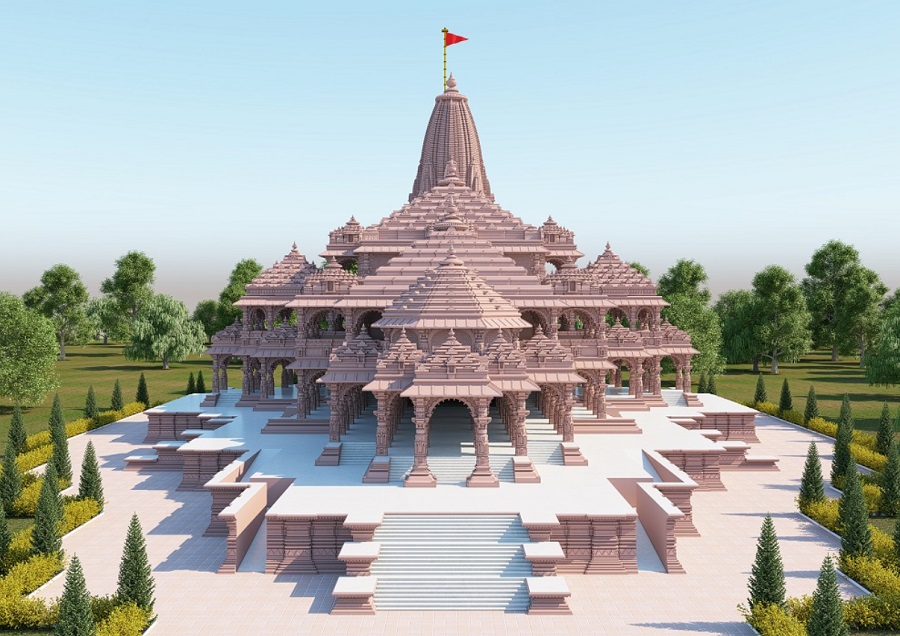
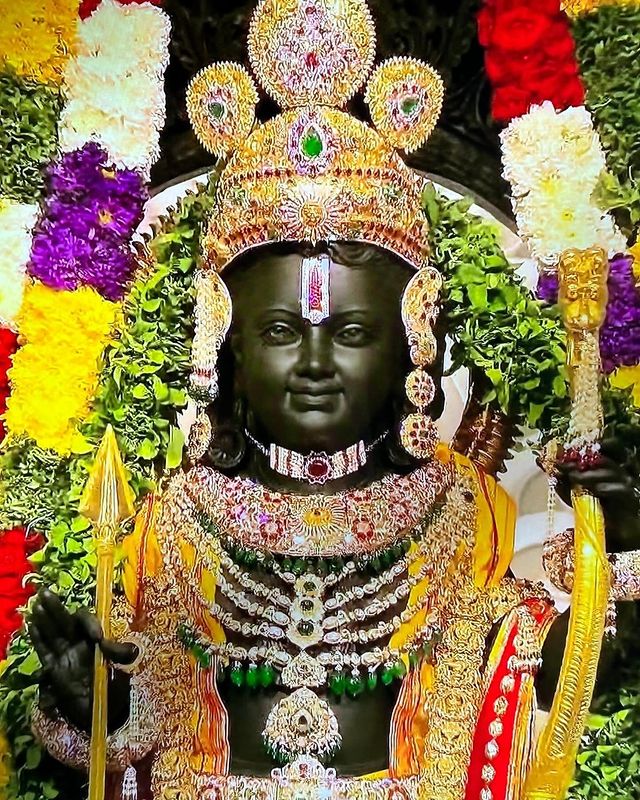
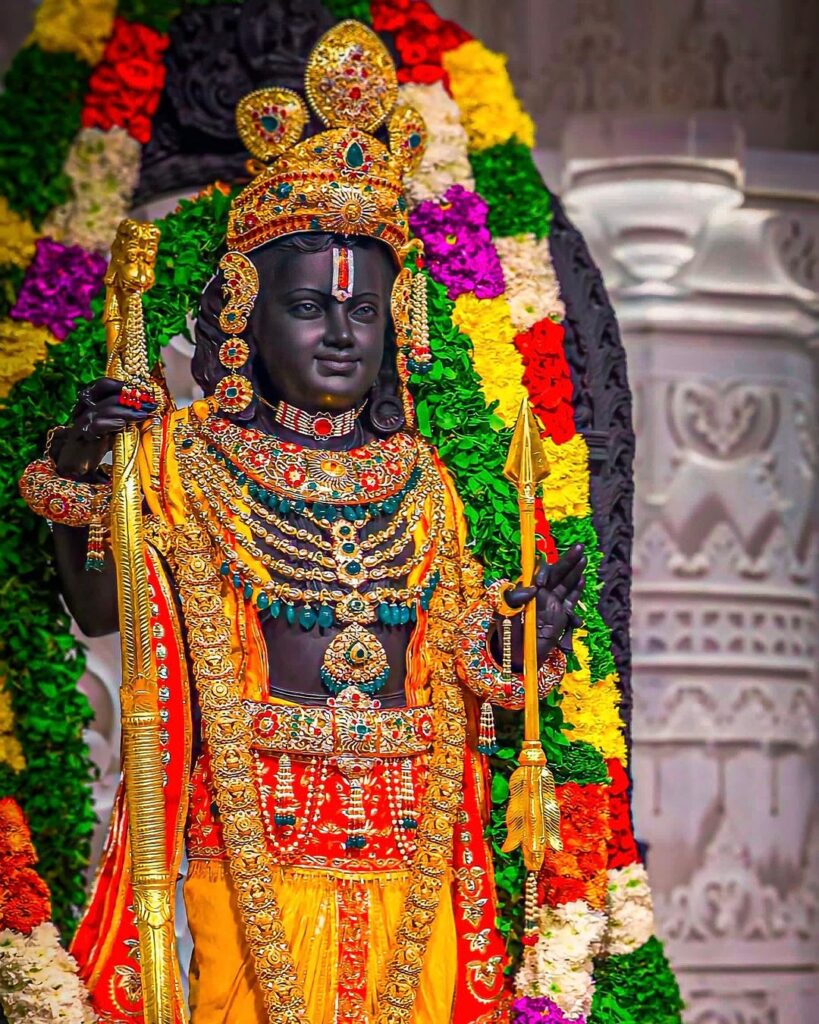

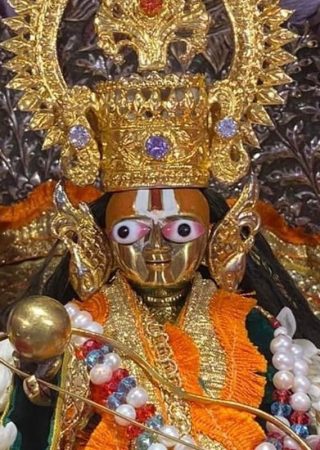
Explore Ayodhya through Lens
A bit about Ayodhya Ayodhya is a city situated on the banks of the holy river Saryu in the Indian state of Uttar Pradesh. It is the administrative headquarters of the Faizabad district as well as the Faizabad division of Uttar Pradesh, India. It shares a municipal corporation with its neighboring twin city of Faizabad.
In traditional history, Ayodhya was the early capital of the kingdom of Kosala, though in Buddhist times (6th–5th century bce) Shravasti became the kingdom’s chief city. Scholars generally agree that Ayodhya is identical with the town of Saketa, where the Buddha is said to have resided for a time.
Famous Temples of Ayodhya:
- Ram Janam Bhumi
- Hanuman Garhi
- Kanak Bhavan
- Dashrath Mahal
- Nageshwar Nath
- Ram Karya shala
- Ram Ki Paudi
Hanumangarhi
- Constructed in the shape of a fort and accessed by a flight of seventy - six steps, the 10th century ancient temple nestles in the centre of the pilgrim town. It has circular fortifications in each corner and is believed to be the spot where Lord Hanuman resided in a cave and protected the town.
- The temple has a golden idol of Lord Hanuman; it is counted amongst the most
- Every day thousands of devotees visit Hanumangarhi to offer prayers and seek Lord Hanuman's protection from evils, and blessing for happiness and prosperity.
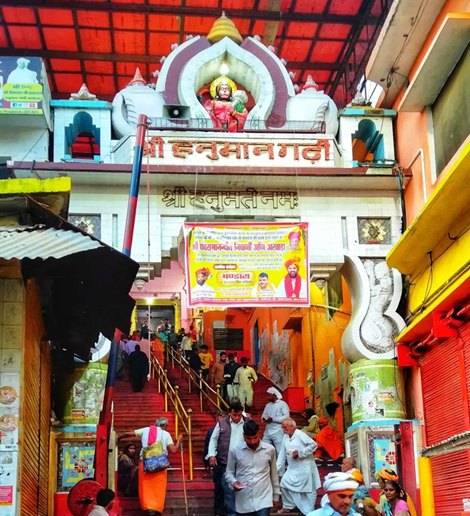
Shri Nageshwarnath Temple
- The presiding deity of Ayodhya is Lord Nageshwarnathji. It is believed that Lord Ram’s son, Kush, built the beautiful temple dedicated to him. The shivalinga ensconced here is said to be quite ancient.
- As per folklore, Kush was taking a bath in the Saryu River when his armlet fell in the water. After sometime, a nag kanya (snake woman) appeared and returned it to him. They fell in love with each other and Kush got the temple structured for her.
- Being one of the most important and venerated temples in Ayodhya, it attracts large crowds of devotees from all over during the festival of Mahashivaratri. The present edifice of the temple was constructed in 1750 AD.

Kanak Bhawan
- Vrishbhanu Kuvari, Queen of Teekamgarh (Madhya Pradesh) in 1891, constructed the exquisitely embellished temple.
- The main temple surrounds an open inner area which houses the sacred shrine of Rampada.
- Marvel at the beautiful idols of Goddess Sita along with Lord Ram and his three brothers.
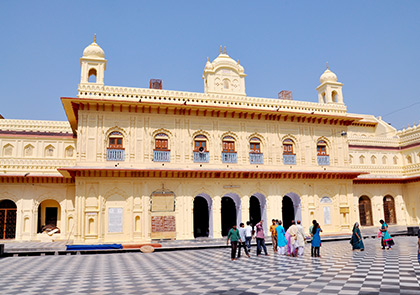
Tulsi Smarak Bhawan
- TulsiSmarakBhawan is dedicated to the great saint - poet Goswami Tulsidas Ji. Regular prayer meetings, devotional concerts and religious discourses are held here. The complex also houses Ayodhya Shodh Sansthan which has a large repository of literary compositions on GoswamiTulsidasJi.
- Ramleela is performed every day from 6.00 pm to 9.00 pm at Tulsi Smarak Auditorium; it is a major attraction.
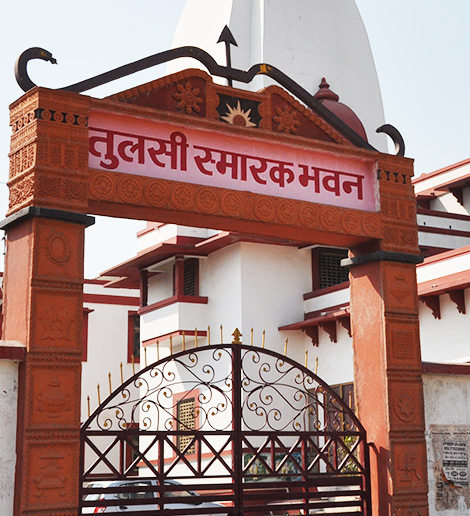
Treta-ke-Thakur
- Also famous as Kaleram - ka - Mandir, the beautiful temple is believed to mark the spot where Lord Ram performed the legendary AshwamedhYagna. The Raja of Kullu (Himachal Pradesh) built the present structure about three centuries ago. It was later renovated by Maharani Ahilyabai Holkar of Indore (Madhya Pradesh). The statues installed here are made of black sandstone; it is believed that they belong to the era of King Vikramaditya.
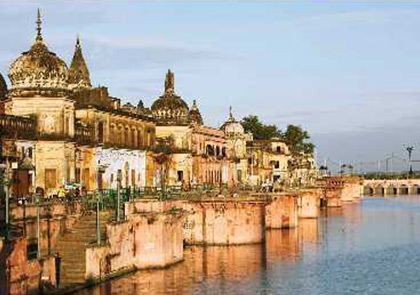
Jain Shrines in Ayodhya
- It is not just the birthplace of Lord Ram but is also a place of high importance for the Jains, with five Jain Tirthankars believed to be born here. Every year, followers reach this town in large numbers to pay obeisance to these great saints and take part in the special occasions. There are many Jain temples spread all over the holy town; one can visit the Lord Adinath Temple near Swargdwar, Lord Anantnath Temple at GolaGhat, Lord Sumantnath shrine at Ramkot, Lord Ajitnath Temple near Saptsagar and Lord Abhinandannath Temple in Sarai locality.
- A huge Jain temple is situated in Raiganj area; it is home to an exclusive 21 ft tall idol of Lord Adinath (Rishabhdevji), who happened to be the first Tirthankar.

Mani Parvat
- It is believed that when Lord Hanuman was carrying the huge mountain with Sanjivani Booti (a herb) to Lanka for the purpose of saving injured Lakhshman, brother of Lord Ram, some part of it fell in Ayodhya. The hillock, about 65 feet high, was later named as Mani Parvat.

Chhoti Devkali Temple
- Located close to Naya Ghat, this temple is associated with numerous fables from the Hindu epic, Mahabharat. According to Mythology, Mother Sita arrived at Ayodhya with an idol of goddess Girija Devi after her wedding with Lord Ram. It is believed that King Dashrath got a beautiful temple constructed and the idol was established in the sanctum sanctorum. Mother Sita used to worship here every day. It is presently dedicated to goddess Devkali and hence the name.

Ram ki Paidi
- A series of ghats set on the banks of river Saryu that serves as a platform to devotees who come here to wash away their sins. It also has lush green gardens surrounded by temples. The river front brings forth an outstanding panorama especially in floodlit night. These serve as platforms to devotees who, it is believed, come to wash away their sins by taking a dip in the holy river. Saryu provides a regular supply of water for the ghats and is maintained by the Irrigation Department, Government of Uttar Pradesh.

Saryu River
- One of the most prominent waterways in Uttar Pradesh, the river finds mention in ancient Hindu scriptures such as the Ved and Ramayan. Literally translating to 'that which is streaming', it flows through Ayodhya and is believed to, rejuvenate and wash away impurities off this religious town! Hundreds of devotees come here to take a holy dip throughout the year on various religious occasions.

Queen- Huh Memorial Park
- The holy city of Ayodhya, in Uttar Pradesh, plays host to hundreds of South Koreans every year that come to pay their tributes to the legendary Queen Huh Hwang-ok. According to legend, Queen Huh Hwang-ok, also known as Princess Suriratna, was the princess of Ayodhya before she went to South Korea and married King Kim Suro of Karak Clan in 48 AD. It is believed that she reached Korea on a boat, and was the first queen of King Suro of Geumgwan Gaya. She was 16-year-old when she got married and is considered to be the first queen of Gaya Kingdom.
- It is because of the presence of her monument in Ayodhya that around 60 lakh people of the Karak clan consider the city as their maternal home. The memorial was first inaugurated in 2001 in Ayodhya.
Gurudwaras
- The Gurudwaras at Brahm Kund and Nazarbagh localities have been associated with Guru Nanak DevJi, Guru Teg Bahadur Ji and Guru Govind Singh Ji. A large number of followers visit the Gurudwaras and bow down in reverence.

Suraj Kund
- Located at Chaudah Koshi Parikrama Marg in Darshan Nagar area, at a distance of 4 km from Ayodhya, Suraj Kund is a big tank surrounded by ghats that presents an exclusively beautiful sight to visitors. The Suryavanshi rulers of Ayodhya, it is believed, constructed the kund to pay obeisance to the Sun god.

Ghats and Kunds
- Famous ghats and kunds are Raj Ghat, Ram Ghat, Lakshman Ghat, Tulsi Ghat, Naya Ghat, Swargdwar Ghat, Janaki Ghat, Vidya Kund, Vibhishan Kund, Dant Dhavan Kund, Sita Kund, etc.
- Amovan Temple, Dashrath Mahal, Janaki Mahal, Lakshman Qila, Luv-Kush Temple, Mattagayandaji Temple, Raj Gaddi, Shri Ram-Janaki Birla Temple and Valmiki Ramayan Bhawan.

Gulab Bari
- As the name suggests Gulab Bari is a rose garden. The vast garden encompasses the entire area that houses the tomb of Shuja-ud-Daula and his family. The garden was established in 1775 and houses a large variety of beautiful rose beds. The splendid mausoleum has a huge dome and is surrounded by a wall. It has two big gateways to enter the complex.
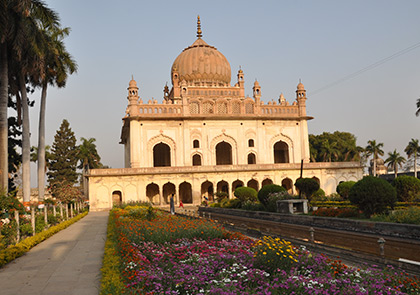
Tomb of Bahu Begum
- It is the final resting place of Begum Unmatuzzohra Bano, the queen of Nawab Shuja-ud-Daula. The mausoleum is an outstanding example of Awadhi architectural style. The entire complex, full of greenery, is now a protected site under the Archaeological Survey of India (ASI) and is managed by the Shia Board Committee (Lucknow). It comes to life during Muharram.
- One can witness a bird's eye view of the city from the top of the complex which is said to be the tallest standing edifice in Ayodhya.

Company Garden
- (5am-12noon & 4pm-9pm)Also known as Guptar Ghat Garden, the sprawling botanical garden is a wonderful place to take a walk, relax or just be with mother nature; leaving behind the worries of daily life and the hustle-bustle of urban areas.
- Located on the bank of Saryu, one can marvel at the numerous varieties of shrubs and trees which have been planted here.

Guptar Ghat
- Situated on the banks of river Saryu, this is the very spot where Lord Rama performed Jal Samadhi. King Darshan Singh constructed it in the early 19th century.
- One can also visit Ram Janaki Temple, Old Charan Paduka Temple, Narsingh Temple and Hanuman Temple on the ghat.
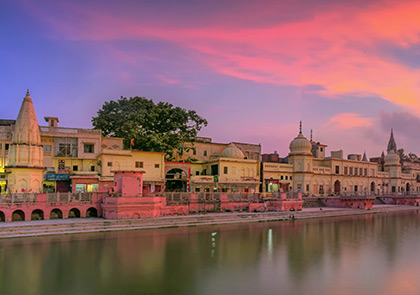
Gallery






